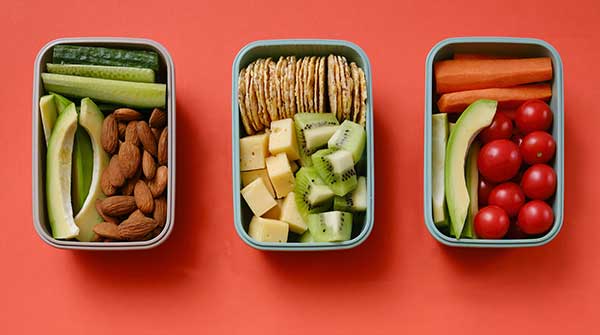The decision to eliminate plastic packaging is purely ideological and effectively sidelines the science
 Plastic undoubtedly remains a significant environmental concern, with widespread consensus that it demands immediate attention. But while addressing plastic bags and utensils presents relatively straightforward challenges, the real dilemma lies in addressing plastic packaging, particularly within the grocery store sector.
Plastic undoubtedly remains a significant environmental concern, with widespread consensus that it demands immediate attention. But while addressing plastic bags and utensils presents relatively straightforward challenges, the real dilemma lies in addressing plastic packaging, particularly within the grocery store sector.
This summer, the Trudeau government introduced the Pollution Prevention Planning Notice (P2), a targeted initiative aimed at primary food plastic packaging used for food. P2 seeks to compel Canada’s largest grocery retailers to formulate pollution prevention strategies focusing on reducing, reusing, and reimagining primary food plastic packaging, with a strong emphasis on incorporating recycled materials. Kudos to the government for taking this vital step.
A striking statistic reveals that grocery store food packaging, much of it designed for single-use purposes, accounts for approximately one-third of all plastic packaging in Canada. From juice boxes and produce bags to yogurt containers and meat trays, the sheer ubiquity of such packaging necessitates immediate action. Initially, Environment Climate Change Canada (ECCC) proposed voluntary industry targets, but there is a potential trajectory towards more stringent obligations in the future.
However, recent developments indicate a notable shift in tone regarding this approach, as it seemingly undervalues the commendable efforts the industry has been making to reduce plastics. ECCC appears to remain impervious to reasoning that goes beyond ideology, overlooking the potential consequences of hastily pursuing plastic elimination, effectively sidelining science-based policymaking.
 Photo by Andrej Lišakov |
| Related Stories |
| Banning plastic packaging may compromise food safety
|
| The harmful ban on single-use plastic products
|
| Our fear of single-use plastics is simply irrational
|
The implications of P2 could have far-reaching effects on our access to fresh produce. Canada imports approximately $7 billion worth of fruits and $3.5 billion in vegetables each year. International trade plays a pivotal role in ensuring affordable food for Canadians. While we export our food globally, we also depend on global markets for our sustenance. Therefore, the economics of food packaging carry immense significance, both domestically and internationally.
Surprisingly, many foreign suppliers who provide produce to Canada remain unaware of P2 and its potential repercussions. Over the years, several food manufacturers, including Nestle, have exited the Canadian market for various reasons, leading to the withdrawal of some brands. P2 could further discourage key suppliers that support our healthy aspirations.
A few years ago, a comprehensive assessment led by one of Canada’s foremost supply chain management and food waste experts, Dr. Martin Gooch, projected that ineffective packaging could lead to nearly half a million metric tonnes of increased food losses and waste – valued at CA$2.5 billion – compared to current levels. It’s worth noting that this estimate is considered conservative.
Significantly, the highest losses are anticipated in perishable commodities vulnerable to damage or those necessitating specialized packaging. Plastic packaging often extends the shelf life of products sensitive to ethylene, a natural ripening agent produced by fruits and vegetables. For example, carrots are susceptible to ethylene produced by neighbouring produce, which shortens their shelf life, affects their appearance, and diminishes their taste. Less appealing produce at retail translates to reduced consumer desirability.
The report’s findings were quite specific, indicating that beans would suffer the most significant increase in losses at 100 percent, followed by soft berries and cucumbers at 90 percent. Leafy greens (73 percent), carrots (61 percent), cherries and grapes (50 percent), beets (45 percent), and soft fruit (34 percent) would also see substantial losses. Across the 20 commodities currently sold prepackaged in plastic, moving away from plastic packaging would result in a 17 percent increase in loss. In essence, eliminating plastics could inadvertently impact food prices at retail.
ECCC’s most significant oversight appears to be its failure to consider Canada’s unique logistical and trade realities. It seems that ECCC is primarily influenced by ideas drawn from European studies. However, it’s crucial to note that in the UK, for example, a far greater proportion of fresh produce sales are prepackaged compared to Canada. Less frequently mentioned is that even these changes would lead to increased labour requirements, higher operational costs, and other forms of pollution, such as supply-chain emissions. More comprehensive data and a thorough scientific evaluation of the consequences are unquestionably required.
There is no denying the urgency of eliminating plastics from grocery stores. However, it is equally vital to understand the potential repercussions of such actions. Currently, it appears that ECCC is indifferent to the future blame that may be solely directed at the food industry for higher food prices when it was the implementation of ECCC’s policies that contributed to this outcome. ECCC is fully aware it can evade accountability.
A more nuanced approach is urgently needed, one that skillfully balances environmental objectives with the practical economic and logistical constraints facing Canada’s food industry.
Dr. Sylvain Charlebois is senior director of the agri-food analytics lab and a professor in food distribution and policy at Dalhousie University.
For interview requests, click here.
The opinions expressed by our columnists and contributors are theirs alone and do not inherently or expressly reflect the views of our publication.
© Troy Media
Troy Media is an editorial content provider to media outlets and its own hosted community news outlets across Canada.


